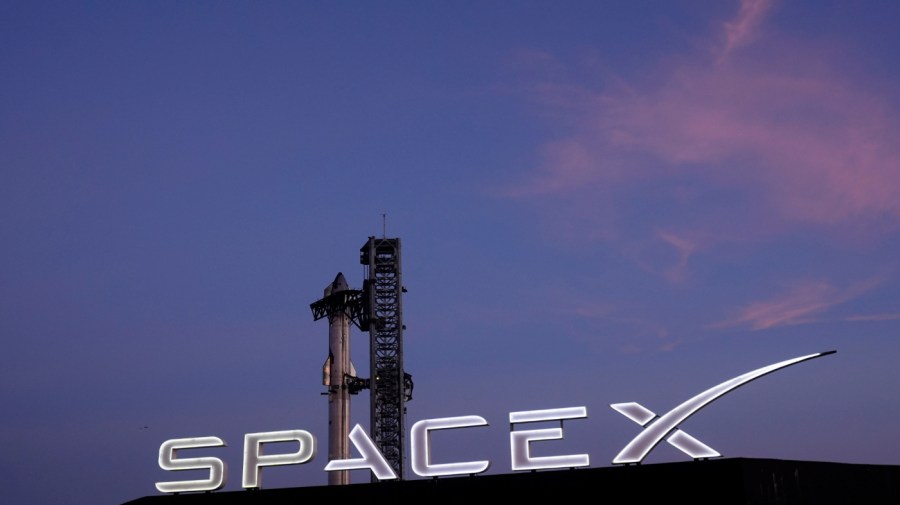]
Blue Origin’s New Glenn rocket is on track for its first launch before the end of 2024.
The rocket, named after John Glenn, the first American to orbit the Earth, has its first major customer, AST SpaceMobile, to launch that company’s BlueBird satellites in 2025 and 2026 to provide direct space-to-cell-phone service. New Glenn can launch 45 metric tons to low Earth orbit, and its first stage is reusable.
Meanwhile, Rocket Lab, which has already established itself as a thriving launch company with its Electron rocket, has signed its first customer for its larger Neutron launch vehicle. The customer, undisclosed at present, will buy two launches, one in 2026 and the other in 2027. Neutron can launch 13 metric tons to low Earth orbit and is fully reusable.
Both developments are welcome news to the world of commercial launches. While SpaceX has revolutionized space launches, vastly decreasing their cost and increasing their reliability, the company founded by Elon Musk has become a de facto monopoly. It has not been acting as one, but it is good that SpaceX has started to acquire viable competitors.
Both Blue Origin and Rocket Lab have not only created viable launch vehicles, they have acquired customers, a prerequisite to becoming profitable businesses.
However, while both the New Glenn and Neutron rockets are competitors to the Falcon 9 and Falcon Heavy, SpaceX is not resting on its laurels. The company is developing the Starship monster rocket, which recently underwent its sixth test flight.
The test flight went, on the whole, well. The Super Heavy booster was not caught by the Mechazilla arms but instead landed in the Gulf of Mexico offshore. However, the Starship met a number of its test objectives, including relighting one of the raptor engines while in space. The Starship landed in the Indian Ocean after stress testing the thermal protection system and the flap controls. The data derived from the test will inform future improvements to the Starship on its way to becoming an operational spacecraft.
President-elect Donald Trump witnessed the launch as a guest of SpaceX CEO Musk. The visit by the once and future president demonstrated his support for commercial space in general and SpaceX in particular. Sen. Ted Cruz (R-Texas) the incoming chair of the Senate Commerce Committee, was also present.
Starship, when it is fully operational, will be several orders of magnitude more capable than any rocket that has come before it. It can launch 150 metric tons to low Earth orbit and, with refueling, to the moon, Mars and beyond. It is fully reusable. The monster rocket is central to plans to send human beings beyond low Earth orbit. Starship will provide capabilities for users that hitherto have been unimaginable outside science fiction,
A recent piece in Space Review suggests that the cost of a New Glenn launch will be about $67 million. Elon Musk says that a Starship launch would cost only $10 million. Rocket Lab is targeting the price of a Neutron launch to be $50 million. Considering the payload capacities of the three launch vehicles, Starship blows away the other two rockets.
SpaceX is upbeat about the future of Starship. In a recent interview, company president and chief operating officer Gwynne Shotwell noted that the monster rocket will be the most valuable part of SpaceX in its ability to generate business. She suggested that as many as 400 Starships will launch in the next four years, eventually supplanting the Falcon family of rockets and the Dragon spacecraft.
Many of those 400 flights will be refueling missions supporting the Artemis program to return astronauts to the moon and Musk’s Mars ambitions. However, SpaceX envisions Starship launching payloads, such as the Starlink constellation, to low Earth orbit. The plan is immense in its scope and ambition.
No evidence exists that any company in the Western world is developing an answer to the SpaceX Starship. However, the Chinese have a concept of a Starship-like rocket called the Long March 9. The Long March 9 will be a two-stage, reusable launch vehicle that can loft 100 metric tons to low Earth orbit and 50 metric tons to a lunar transfer orbit. The rocket could be used to build a Chinese lunar base and launch heavy payloads such as a solar power station to low Earth orbit.
The Chinese get the future of launch vehicles. Does anyone else, outside of SpaceX, understand that future?
Mark R. Whittington is the author of “Why is It So Hard to Go Back to the Moon?” as well as “The Moon, Mars and Beyond,” and, most recently, “Why is America Going Back to the Moon?” He blogs at Curmudgeons Corner.








